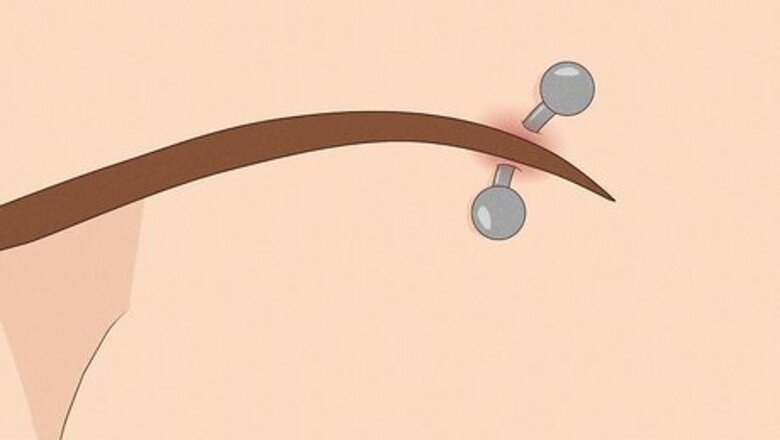
views
What is piercing rejection?
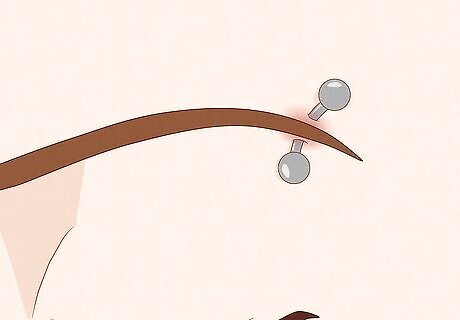
Piercing rejection occurs when the body identifies the piercing as a foreign object. Basically, your body “rejects” the new piercing and tries its best to get rid of it. The piercing may start migrating to the surface or become large and inflamed. This can happen with any type of body piercing, like belly button piercings, septum piercings, and eyebrow piercings.
Everyday Care
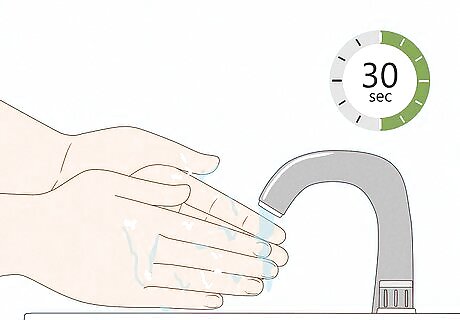
Wash your hands for 30 seconds before caring for your piercing. Keeping your hands clean will help prevent your piercing from getting infected. Avoid touching your piercing with dirty hands.
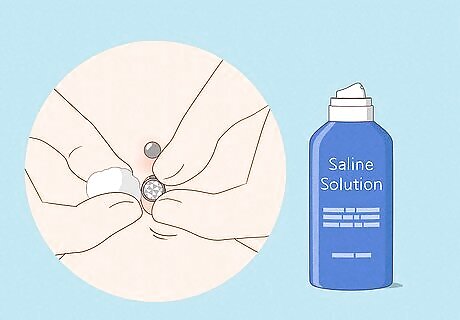
Wash your piercing with a cleaning solution twice daily. Use soap with water or a saline solution to clean your new piercing. Dip whatever solution you choose onto a cotton ball and dab it onto your piercing while rotating the piercing. If your piercing starts to bleed or dry out, use an oil-based soap. You can often purchase solutions at the same place where you got your ears pierced. Avoid rubbing alcohol-based solutions, which can dry out your piercing.
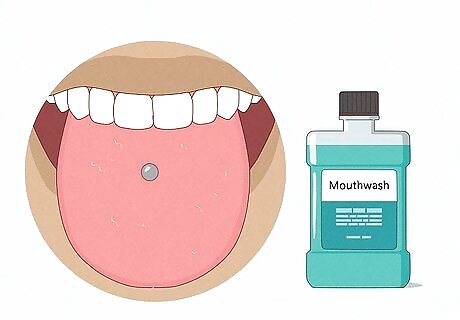
Clean oral piercings with mouthwash. Oral piercings are especially prone to rejection and infection. If you've received a tongue, lip, or cheek piercing, rinse it out with an antiseptic mouthwash. Once your piercing has healed (which usually takes 3-4 weeks), take it out at night and brush the area with a soft-bristled toothbrush.
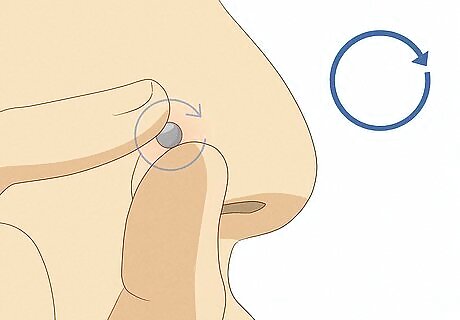
Rotate your piercing periodically. Without turning your piercing, your body may heal over the metal and develop an infection. Infections can make your piercing more prone to rejection. Always clean your piercing out before you rotate it to avoid pushing dirt or germs into the piercing.
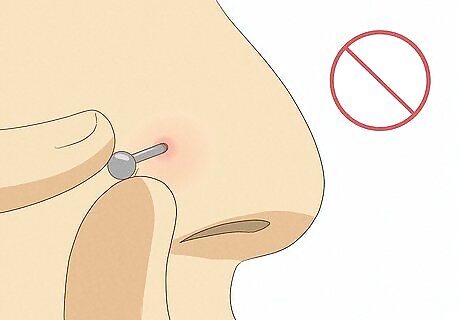
Avoid removing your piercing before it has healed. If your jewelry isn't sterilized, changing piercings before you've healed can irritate your immune system. You also may not be able to get your piercing back in after removing it. Signs that your piercing has healed vary depending on the body part. Ask the person piercing your body how to know when you can remove your piercing. Piercings heal at different rates. Ask the person who pierced you how long to wait before swapping out piercings.
How to Treat Infections

Look for signs of mild infection. In cases of mild infection, your body has not likely rejected the piercing and can still heal. Infection symptoms include red or swollen skin, tenderness or heat when touching the piercing, or yellow-green discharge.
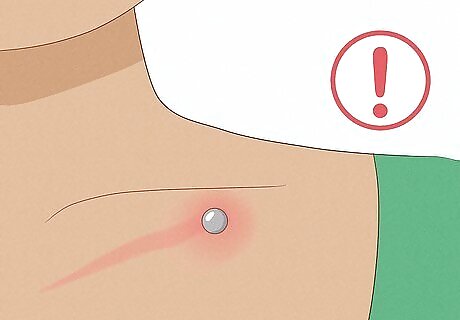
Seek medical attention if you develop signs of a serious infection. If your piercing becomes seriously infected, you must get medical help right away. Signs of a serious infection include: High fever. 102 °F (38.9 °C) is high for children, and 104°F (40 °C) is high for adults. Body chills Nausea and Vomiting Red streak around the piercing Swollen lymph nodes

Clean the infected piercing with a cotton ball and antibacterial solution. Wash the piercings at least twice a day with antibacterial soap. Moisten a cotton ball with this solution and clean your piercing much like you used the soap or saline solution. Ask the studio you received your piercing from for antibacterial solution recommendations.
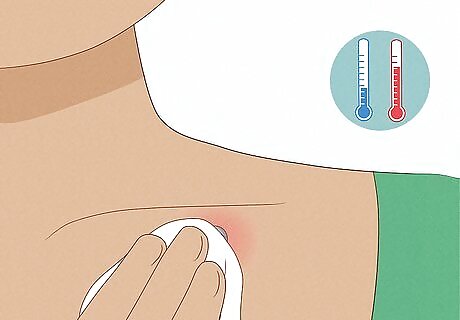
Use a compress to relieve your piercing. Cold compresses relieve swelling or aching. Never apply ice directly to the piercing; wrap it in a cloth or towel instead. Warm compresses can encourage blood flow to your piercing and heal your infection when used interchangeably with cold compresses. If warm compresses cause swelling, stop using them. For inflammation, apply a cold compress for at least 20 minutes every 2-3 hours. Once your piercing is no longer inflamed, alternate between hot and cold compresses every 10 minutes for as long as desired. Use a saline solution instead of water in warm compresses. Dampen a towel or cloth with the solution and warm it in a microwave for 30 seconds. Make sure it's not too hot before you put it on your piercing so you don't burn yourself.
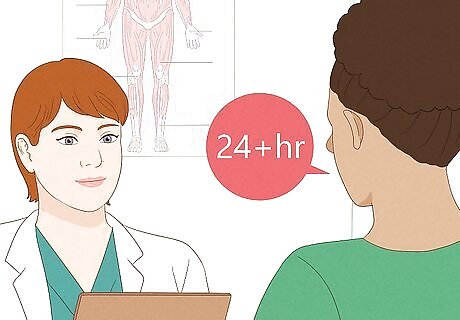
Go to the doctor if inflammation persists for longer than 24 hours. Piercing infections can take 4-6 weeks to heal, and in many cases, your body will not reject it. But if you haven't experienced relief from swelling or experience acute pain for over 6-24 hours, visit a medical clinic. Your doctor can prescribe antibiotics, advise additional treatment, or identify a potential allergy. Serious infections can happen quickly, so you must seek medical attention right away if your piercing isn't healing. A piercing should never cause serious pain. If you're experiencing serious pain, seek medical attention immediately.
Dealing with Piercing Rejection

Recognize the signs of migration. If your piercing has shifted from its original site, you may be experiencing migration. Your piercing might have migrated if you notice constant soreness, a loose-hanging piercing, or a larger hole around the piercing. Migration and rejection are connected. Usually, migration is a symptom of rejection. Although rejection usually happens to newer piercings, your body can still reject older piercings. Once your piercing starts migrating, it usually cannot be treated. Rejection is irreversible.

Visit the place you got your piercing. In many cases, once your piercing has been rejected, you need to have the piercing removed. Talk to the person who pierced your ears and ask for their opinion. They might remove the piercing, or they might diagnose you with an infection and advise treatment.
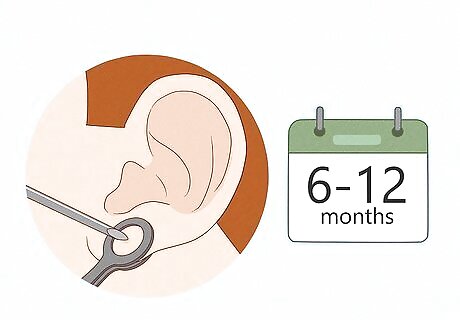
Re-pierce in 6-12 months. If you do have to remove the piercing, you can get the area re-pierced after it has healed. Return to a professional piercer between six months to a year after removal.
Addressing Allergic Reactions
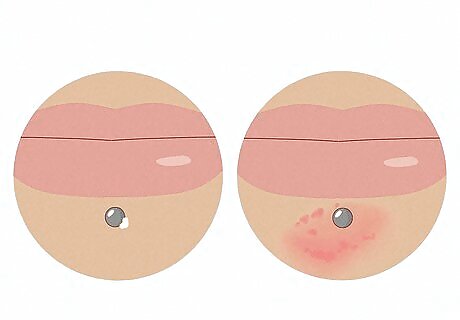
Separate the signs of an allergic reaction from infection. In some cases, your body might reject a piercing due to allergies. You can recognize an allergic reaction by a burning sensation, severe itching, gaping skin, a rash, or clear to yellowish discharge around your piercing.

Go to a doctor or dermatologist for an allergy test. Doctors can recognize allergies by looking at your skin, but they cannot pinpoint specific allergies. Visit a dermatologist if you want a skin patch test to verify with certainty whether you're allergic to your piercing.

Remove the piercing if you're allergic. Metal allergies are usually lifelong and cannot be treated. If your body's rejecting the piercing due to allergy, you must remove the piercing. Avoid jewelry made of whatever metal your piercing was to avoid future rejection. You may be able to use surgical steel piercings if you suffer from metal allergies. Surgical steel is designed to not cause allergic reactions.
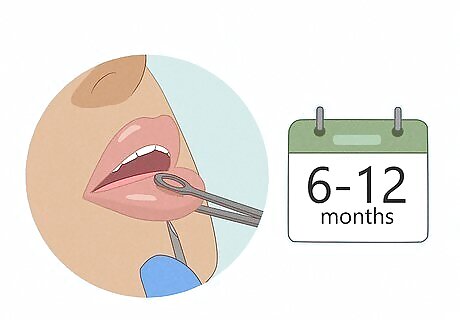
Re-pierce your body after the area has healed. Wait 6-12 months before you get pierced again. Before you get another piercing, get a skin patch test to check which metals you're allergic to. Choose a hypoallergenic piercing made of a metal you know won't trigger a reaction. Tungsten, titanium, silver, platinum, and 14-karat gold are all hypoallergenic alloys.
















Comments
0 comment